 Three months ago, I wrote about being ambushed by a neighbor at a Halloween party. She wanted me—an English teacher—to answer for what she believed to be horrific shortcomings in grammar instruction at the local middle school. The incident left me inspired to rethink my own grammar instruction. I even put “figure out grammar mess” on my to-do list for the Thanksgiving break.
Three months ago, I wrote about being ambushed by a neighbor at a Halloween party. She wanted me—an English teacher—to answer for what she believed to be horrific shortcomings in grammar instruction at the local middle school. The incident left me inspired to rethink my own grammar instruction. I even put “figure out grammar mess” on my to-do list for the Thanksgiving break.
Spoiler alert: grammar instruction is still a bit of a mess in my classroom. But, three months later, I’m in a much different place with my understanding of grammar instruction and my goals for it.
I ended my last post committing to trying grammar mini-lessons. So December 1, we took off. I took some sample sentences from students’ essays that had problematic punctuation, and I started class with a quick punctuation lesson. We practiced, we did exit slips, and I started keeping a little chart of who was getting it and who needed extra practice.
I was feeling pretty smug about the whole thing until I collected their next essays. Same mistakes. They had applied exactly nothing to their own writing. Luckily, that depressing revelation coincided nicely with winter break, so I had some time to regroup and come up with a new strategy.
Not Just Rules
Over winter break, I did some more digging online and stumbled across this excellent blog post, which helped me rethink how I was framing grammar instruction for my students. Writer and teacher Allison Marchetti explains that “Most students would say that grammar is a set of rules, so we have to work hard to undo this restrictive thinking and help them see grammar as a series of possibilities rather than limitations.”
My wheels started spinning. It’s not just “most students” who think of grammar as rules—I think of it as rules, too. I’d never really thought of grammar as a possibility. I see writing as a series of possibilities, but grammar? I had been thinking of them as two separate things.
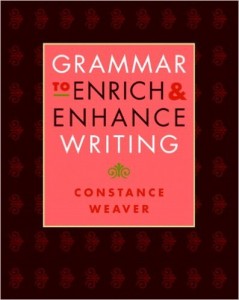 Next, I read Constance Weaver’s Grammar to Enrich and Enhance Writing. I found a passage that took this idea of possibilities even further. She quotes an article by writer Philip Pullman in which he explains that we must teach students to be playful with language. Weaver agrees and suggests that we “rediscover this playfulness, this attitude that language and grammar are to be played with, toyed with, bent, expanded, crafted, enjoyed.” Her book digs into the nitty-gritty of parts of speech and uses all of the terminology that I remember drilling back in seventh grade English. By the third chapter I was knee deep in adjectival modifiers. My ambushing neighbor would be beside herself with joy.
Next, I read Constance Weaver’s Grammar to Enrich and Enhance Writing. I found a passage that took this idea of possibilities even further. She quotes an article by writer Philip Pullman in which he explains that we must teach students to be playful with language. Weaver agrees and suggests that we “rediscover this playfulness, this attitude that language and grammar are to be played with, toyed with, bent, expanded, crafted, enjoyed.” Her book digs into the nitty-gritty of parts of speech and uses all of the terminology that I remember drilling back in seventh grade English. By the third chapter I was knee deep in adjectival modifiers. My ambushing neighbor would be beside herself with joy.
But Weaver is quick to point out that it doesn’t really matter if kids can name or identify the tool they’re using. Yes! Agree! They can if they want to, or they can just play with the structures, experiment with language, and work on becoming more interesting, natural, confident writers.
Learning by Imitation
I’m starting to see a way forward, and this has become my new focus with grammar instruction. I’m not even using that term. Instead, we’re talking about craft and developing a confident, genuine voice. We’re talking about structuring sentences to give a little extra punch, or moving phrases to call attention to different ideas.
I’ve done this before as a writing teacher, but never with the frame of grammar in the back of my mind. I’m sprinkling in terms when they are appropriate, but using them as a way to explain how students can mimic a cool sentence they find in a piece of writing.
Last week, we read a piece by pop-culture writer Chuck Klosterman and examined the moves he makes as a writer. He’s an incredibly funny, inventive, and natural writer, so it worked well as a mentor text. We mimicked some, we practiced a little, and then I asked them to apply it to their writing. It was a tiny little lesson, but I’m already seeing results—certainly more results than my ill-fated punctuation mini-lessons.
I need to do more, and I want to be a little more systematic in my approach. I still have lots to think about:
- Which craft moves do I introduce to my students?
- How do I frame those within the context of grammar?
- How do I continue to weave it into our writing workshop so that it feels connected and relevant?
- How and when do I unleash this playful grammar on my tenth graders? My AP students are my willing, eager guinea pigs; my tenth graders will be a harder sell.
I’ll keep plugging along, I’ll keep researching, and I’ll keep experimenting. I’d love to hear what works with your students or any suggestions you have for me. How do you help your students think about the moves they make as writers? Tweet me your suggestions @TeacherHattie and join me in learning more on Thursday, April 14, for Constance Weaver’s webinar about her book! Click here for details and to register.
 Hattie Maguire is an English teacher and Content Area Leader at Novi High School. She is spending her fifteenth year in the classroom teaching AP English Language and Composition and English 10. She is a National Board Certified Teacher who earned her BS in English and MA in Curriculum and Teaching from Michigan State University.
Hattie Maguire is an English teacher and Content Area Leader at Novi High School. She is spending her fifteenth year in the classroom teaching AP English Language and Composition and English 10. She is a National Board Certified Teacher who earned her BS in English and MA in Curriculum and Teaching from Michigan State University.
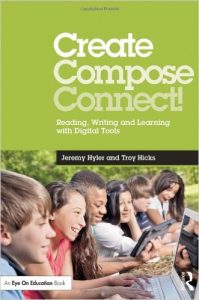 Grammar instruction continues to be more important than ever when we look at the digital landscape our students belong to today. Experts Constance Weaver and Jeff Anderson offer us wonderful ways to infuse grammar into our everyday writing lessons. However, as educators, we need to address how students write in digital spaces. We need to teach them to differentiate between the writing they do in their digital spaces and their non-digital spaces. In this interactive session, teachers and educators will learn effective strategies using Google Slides along with social media, that can help students to differentiate between formal and informal writing while learning new grammar skills.
Grammar instruction continues to be more important than ever when we look at the digital landscape our students belong to today. Experts Constance Weaver and Jeff Anderson offer us wonderful ways to infuse grammar into our everyday writing lessons. However, as educators, we need to address how students write in digital spaces. We need to teach them to differentiate between the writing they do in their digital spaces and their non-digital spaces. In this interactive session, teachers and educators will learn effective strategies using Google Slides along with social media, that can help students to differentiate between formal and informal writing while learning new grammar skills. University, teaches pre-service writing methods classes and facilitates professional development on the teaching of writing, writing across the curriculum, and writing with technology. In his research, he collaborates with K-16 teachers and explores how they implement newer literacies in their classrooms. He also serves as the Director of the Chippewa River Writing Project, a site of the National Writing Project at CMU. His publications include The Digital Writing Workshop (Heinemann, 2009) and Because Digital Writing Matters (Jossey-Bass, 2010). Twitter ID:@hickstro
University, teaches pre-service writing methods classes and facilitates professional development on the teaching of writing, writing across the curriculum, and writing with technology. In his research, he collaborates with K-16 teachers and explores how they implement newer literacies in their classrooms. He also serves as the Director of the Chippewa River Writing Project, a site of the National Writing Project at CMU. His publications include The Digital Writing Workshop (Heinemann, 2009) and Because Digital Writing Matters (Jossey-Bass, 2010). Twitter ID:@hickstro Jeremy Hyler is a 7th/8th grade English teacher at Fulton Middle School in Middleton, Michigan. In addition, he is a co-director for the Chippewa River Writing Project. He co-authored Create, Compose, Connect: Reading, Writing, and Learning with Digital Tools. He is also a contributing author to Assessing Students’ Digital Writing: Protocols for Looking Closely. He is currently working on his second book about teaching grammar in the digital age. Jeremy has presented both statewide and nationally on the importance of integrating technology effectively and with purpose into the language arts classroom. He is always interested in helping teachers find new, productive and meaningful ways to implement technology into their classrooms. Jeremy can be found on Twitter @jeremybballer and his website is jeremyhyler.wikispaces.com.
Jeremy Hyler is a 7th/8th grade English teacher at Fulton Middle School in Middleton, Michigan. In addition, he is a co-director for the Chippewa River Writing Project. He co-authored Create, Compose, Connect: Reading, Writing, and Learning with Digital Tools. He is also a contributing author to Assessing Students’ Digital Writing: Protocols for Looking Closely. He is currently working on his second book about teaching grammar in the digital age. Jeremy has presented both statewide and nationally on the importance of integrating technology effectively and with purpose into the language arts classroom. He is always interested in helping teachers find new, productive and meaningful ways to implement technology into their classrooms. Jeremy can be found on Twitter @jeremybballer and his website is jeremyhyler.wikispaces.com.
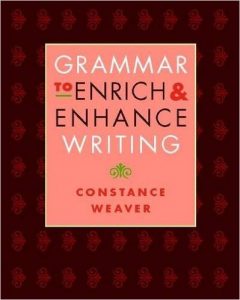

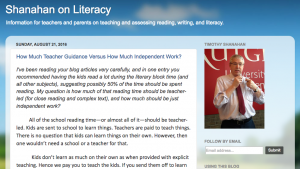

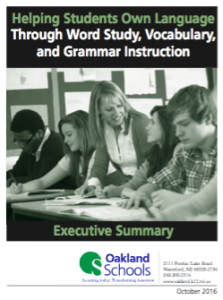
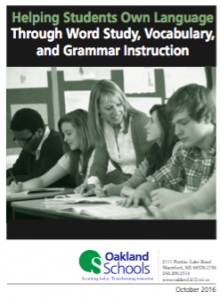

 Three months ago,
Three months ago,  Next, I read Constance Weaver’s
Next, I read Constance Weaver’s 
 It happens to my husband all the time. He is a police officer, and it is rare that he can make it through a party without someone asking him how to get out of a recent ticket. It almost always starts the same way.
It happens to my husband all the time. He is a police officer, and it is rare that he can make it through a party without someone asking him how to get out of a recent ticket. It almost always starts the same way.  After Thanksgiving, my AP Language students and my ELA 10 students are starting new writing assignments. Now is the time, I think, to
After Thanksgiving, my AP Language students and my ELA 10 students are starting new writing assignments. Now is the time, I think, to 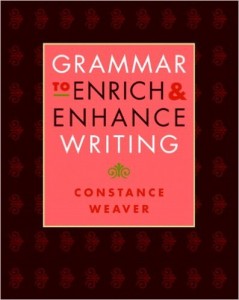 Do your students’ sentences drip with juicy details, engaging and enticing the reader? Or do they plod along, a repository for just the most basic information? When you ask students to add details, do they pile up adjectives before nouns? Or add sentences, each sentence basic in structure, adding just one detail per sentence, creating paragraphs that lumber along–thump, thump, thump–instead of demonstrating variety and flowing gracefully? Then this workshop if for you! Decades ago, I learned from the writings of Francis Christensen how to write sentences that subordinate details to a main statement, using grammatical options that most students seldom employ unless they are avid readers, in love with richly written texts. Paradoxically, perhaps, playing with form can help writers generate content—those “juicy” details that we find call to us as readers.
Do your students’ sentences drip with juicy details, engaging and enticing the reader? Or do they plod along, a repository for just the most basic information? When you ask students to add details, do they pile up adjectives before nouns? Or add sentences, each sentence basic in structure, adding just one detail per sentence, creating paragraphs that lumber along–thump, thump, thump–instead of demonstrating variety and flowing gracefully? Then this workshop if for you! Decades ago, I learned from the writings of Francis Christensen how to write sentences that subordinate details to a main statement, using grammatical options that most students seldom employ unless they are avid readers, in love with richly written texts. Paradoxically, perhaps, playing with form can help writers generate content—those “juicy” details that we find call to us as readers. ![Connie Weaver 2014[1] copy](https://www.oaklandschoolsliteracy.org/wp-content/uploads/2015/09/Connie-Weaver-20141-copy-169x300.png) Constance (Connie) Weaver
Constance (Connie) Weaver